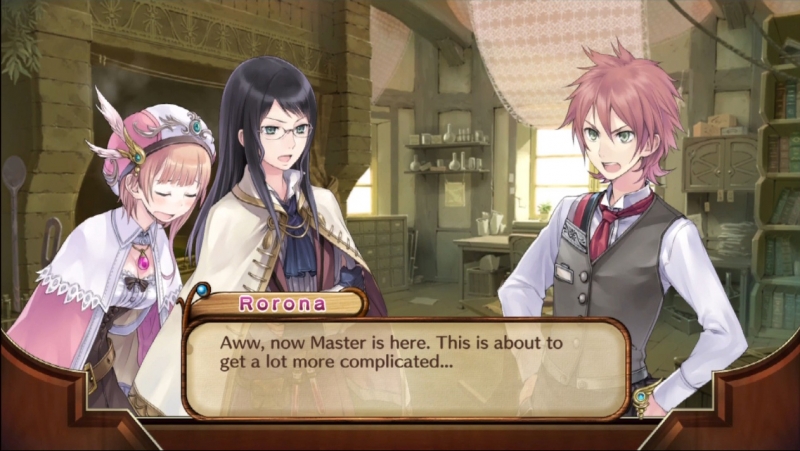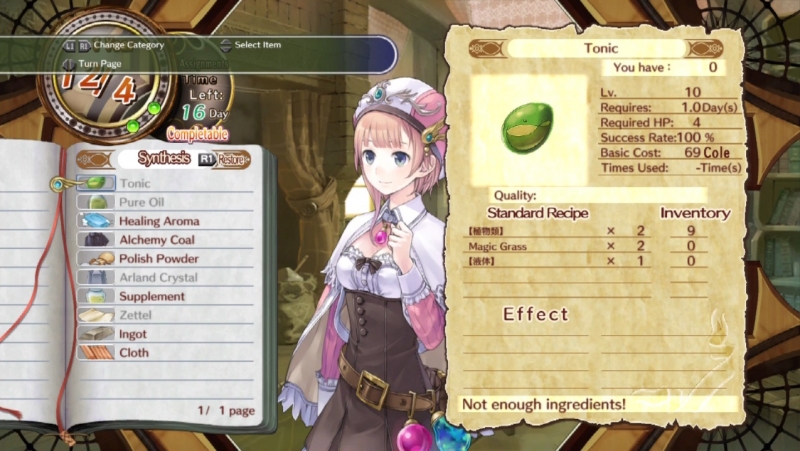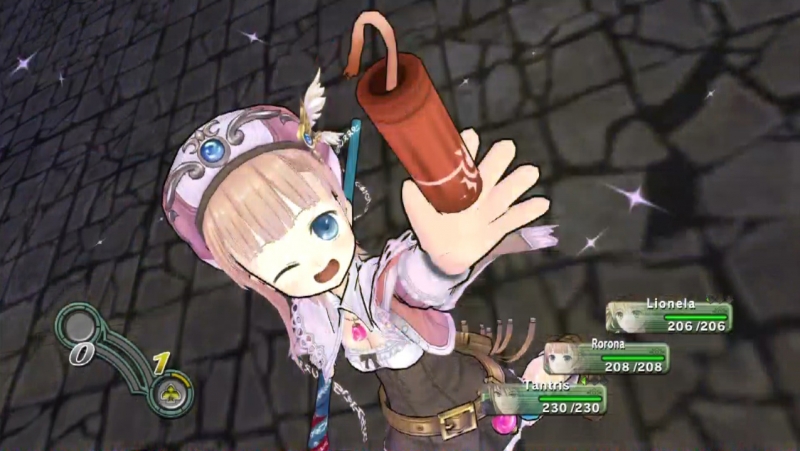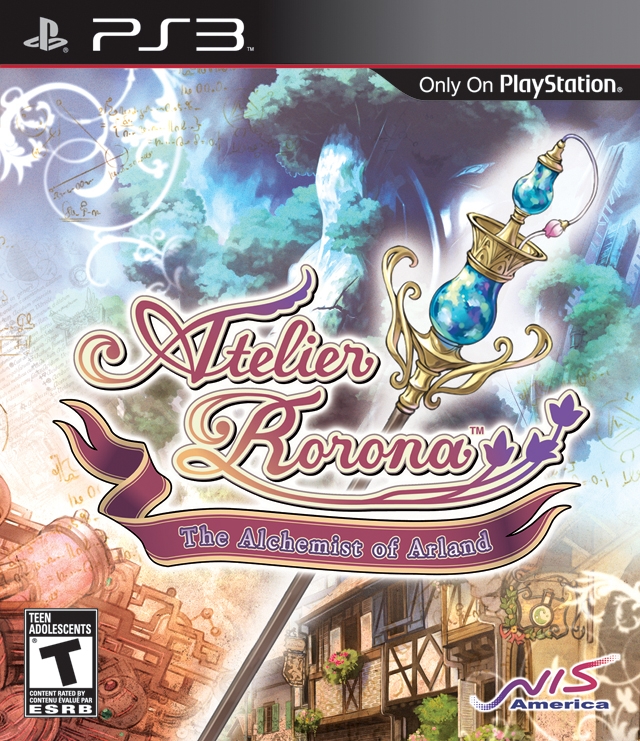
Atelier Rorona: Alchemist of Arland - Review
by Karl Koebke , posted on 19 September 2010 / 9,824 ViewsIt’s been quite a few years since the Japanese release and it didn’t even make it here before the sequel came out in Japan but Atelier Rorona has finally made it to the West. Fans of Gust’s previous games know that they emphasize item creation more than most other JRPG series but I was surprised how much it was at the forefront of Atelier Rorona. I would even say that those who buy this game hoping for a stereotypical JRPG experience are going to be disappointed, but before you throw the disc out a window just give it a chance. While you won’t be saving the world or fighting tyranny, there’s a certain charm in collecting materials and item creation that mostly makes up for the lack of meaningful storyline.

Atelier Rorona is the story of a young alchemist who learns that her master’s workshop is being threatened with foreclosure unless it can prove its usefulness. That same day Rorona’s master puts up a new sign for the workshop that says “Atelier Rorona” and tells her pupil that the workshop is now hers. If she wants to keep the place open she must perform tasks assigned by the local government and passed down by a messenger named Sterk every three months for three years and a total of 12 assignments. Whether or not you pass is based on the quantity and quality of goods you bring in or number of the assigned monsters you defeat or ingredients you gather. I only ever had trouble completing the assignment once so most times I was done early with lots of free time to go explore new places to gather ingredients or test out that new recipe I just bought.
Along the way, you encounter a number of characters who either run shops you’ll visit and/or can accompany you to defeat monsters. Each of these characters has a side story you can follow by performing tasks for them until they like you enough but what I saw of them didn’t leave me interested enough to do the work. It’s a similar setup to Persona where you have to manage your time between the main story quest and getting to know the people around you but getting to know people takes more work for less payout in Atelier Rorona. Overall, the story wasn’t enthralling enough to steal my attention away from the main tasks of item creation and ingredient gathering but it did make me laugh a few times during my play through.
If someone asked me what Gust does best I’d have to say sexual innuendo, since the attack in Ar Tonelico 2 where the character yells out “MAXIMUM PENETRATION” made me giggle like an idiot more often than I should admit, and item creation. There is no sexual innuendo in Atelier Rorona so you will just have to be happy with item creation, but Gust is really the master of that domain. Every ingredient you gather has a quality out of 100 as well as special traits individual to that single ingredient. You will never get two Magic Grass or Uni that are exactly the same which leads to even more variance in the outcome of your Alchemy.

Recipes call for specific ingredients sometimes but more often, they call for something general like “liquid” or “plant” which gives you even more choices for ingredients to use. What ingredients you choose will then lead to the item having a certain quality, traits picked up from the individual components of the recipe, and properties based on what kind of ingredient you chose. Properties define important characteristics of the item like how much it will heal or damage when used or what kind of armor a piece of metal can be turned into while traits are more like bonus stats. Some of these traits are meaningless and only serve as specifications for quests like “small” and “star shaped” but some traits are extremely important to consider especially when you are crafting something that will eventually become weapons or armor like “Max HP +1” and “Attack +2”. There is just a huge amount of variety in what you can make which helps keep it interesting when you are making an ingot for the tenth time. You can also fail when you’re trying to create something but each item you successfully make gives you Alchemy Experience which will increase your aptitude and gives you a better chance of being successful at the more difficult syntheses.
Obviously since there is a due date to your assignments time management comes into play. Every item you make or area you explore takes a certain amount of days out of the three months you have to complete the assignment so you have to be careful. You also have to manage your health since every item you create takes a certain amount of Rorona’s health, which can be quite a large amount for higher-level items, and the only free way to restore her health is to rest a few days, which takes up even more time. Halfway through you get a helper around the workshop that you can assign simpler tasks like gathering from places you have already been or crafting things you’ve already made. This helps with the workload but by that time the new areas that open up take 5-8 days just to get there and another 5-8 to come back so having a helper is more of a necessity than a bonus.

If Alchemy in Japanese culture (and yes I’m basing this solely on Anime) has taught us anything, it’s that you can’t create something from nothing. Ingredients have to be gathered from monster-infested areas around town and this is where your newfound friends come in. You can take two friends to help you fight your way to the good gathering spots and depending on whom you take, you will be charged a fee. Luckily this is a per trip fee and not a per day fee so unless you are particularly strapped for cash it isn’t a problem. Gathering ingredients has no mini-game associated with it like in Mana Khemia but there is a certain amount of strategy to what you pick up because of your limited inventory of 60 items. Picking and choosing what to take can be quite complicated when you include all of the special traits the ingredient can have and its overall quality.
As I mentioned before these areas are infested with monsters so you will have quite a bit of actual fighting to do while out gathering. Enemies appear in the field and most can be easily avoided but you can’t overuse that privilege otherwise you will get man handled by the next mandatory fight. Battles are a simple turn based affair with a very basic strategy involved. Rorona is the only one who can use items but she can use anything you bring along including bombs for massive damage. On the other hand, everyone has a number of skills they can use.
Performing skills takes up health so when you first start out you have to use them sparingly. This cost doesn’t really scale with the health you have at later levels so after a while the cost of skills is only an afterthought. Elemental properties of the battlefield also come into play and every skill you use of a certain element will increase its amount on the battlefield that will unlock skills that are more advanced. This can be counteracted if someone uses a skill of the opposite element. Mostly strategy in battles is secondary to being prepared for them in the first place so it all comes back to Alchemy.

Atelier Rorona was Gust’s first foray into HD console development (I say “was” because Atelier Totori and Ar Tonelico 3 are already out in Japan) and it’s an admirable first attempt with a few rough edges. The still character profiles during dialogue are quite detailed and pleasing to the eye and Rorona looks great while walking around town though I don’t quite get why she appears 12 during gameplay but closer to adulthood during dialogue sequences. Animations during Battles on the other hand are quite disappointing in presentation. Characters fly forward and attack unnaturally while their target appears not to even register the damage even in death. There was also a few framerate slow downs I noticed and I had the luck of having the game crash on me once but overall Atelier Rorona is nice to look at if not technically amazing.
Voice acting was more minimal than I expected with a lot of scenes going without it. When there was voice acting there wasn’t anyone who stood out as particularly terrible or great but if you disagree you can always try switching from English to Japanese. The Music is upbeat and cheery which fits the game well. I found myself humming a few times but it mostly came off as good background noise that I didn’t care about one way or another. An exception was one of the blacksmith’s songs that featured him singing and made me laugh every time I heard it.
Twenty-one and a half hours was all it took for me to beat Atelier Rorona with the “normal ending” which is disappointing from JRPG standards. The game says it has 30 different endings but what that really means is four different main story endings and a bunch of mini-side-character-endings that you can get by doing enough tasks for them. If you love the characters this could mean great replay value for you, but I personally didn’t have the drive to start over immediately. Once you complete the game on your first pass through you can go back to the start to try maxing out different friends and see their endings but all of your items and levels disappear so you have to start mostly from scratch. I was disappointed to find out that there is no option to keep playing past the last assignment since I would have really liked to try out some recipes I found near the end of the game.

I may have sounded harsh on Atelier Rorona but that’s mostly because I want you to know what you’re getting in for. It’s a good JRPG but not for the reasons you would usually expect. The battle system is minimal and the story is mundane but I really loved all the nuances of item creating and the art style is a nice departure from the norm for HD gaming. If you can’t wait to get through the endless story and complex battles in RPG’s to get back to the item crafting then you have found your perfect game, otherwise fans of the genre should still give it a shot as long as you have the right expectations. I eagerly await NISA’s next localization of a Gustdeveloped title to see what they learned from their first PS3 game and brought to Ar Tonelico 3.
VGChartz Verdict
7
Good


























